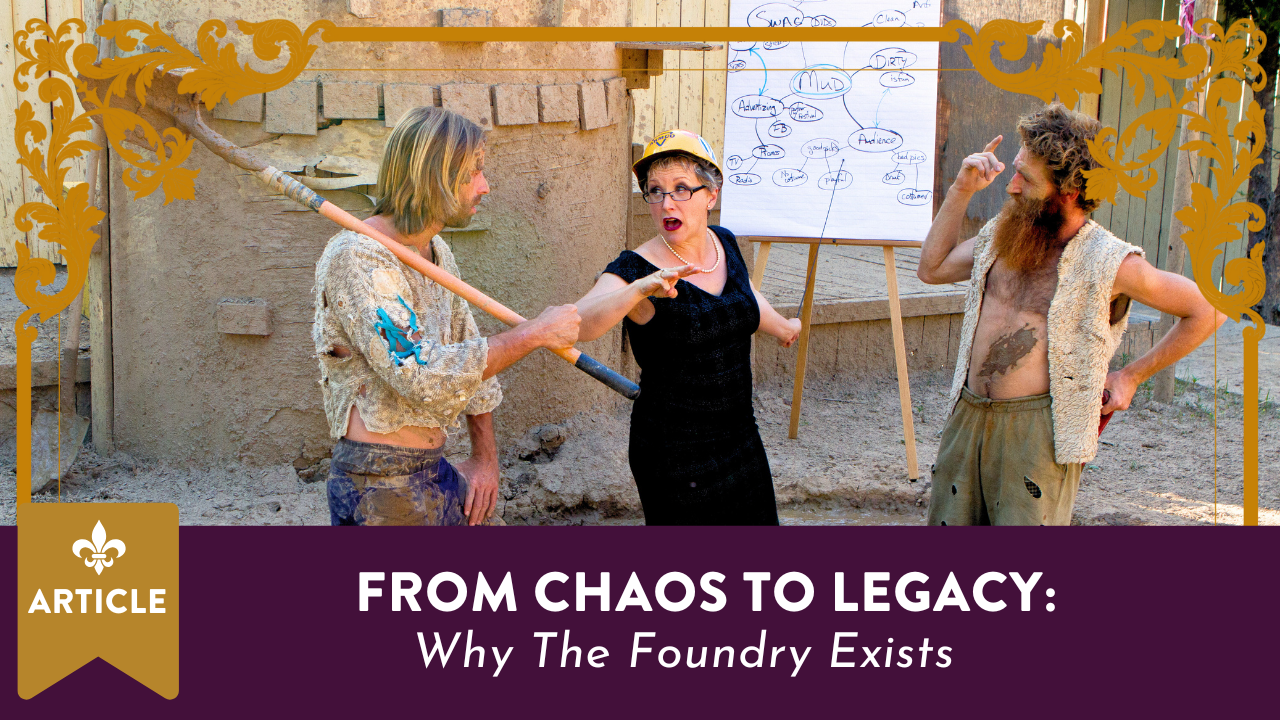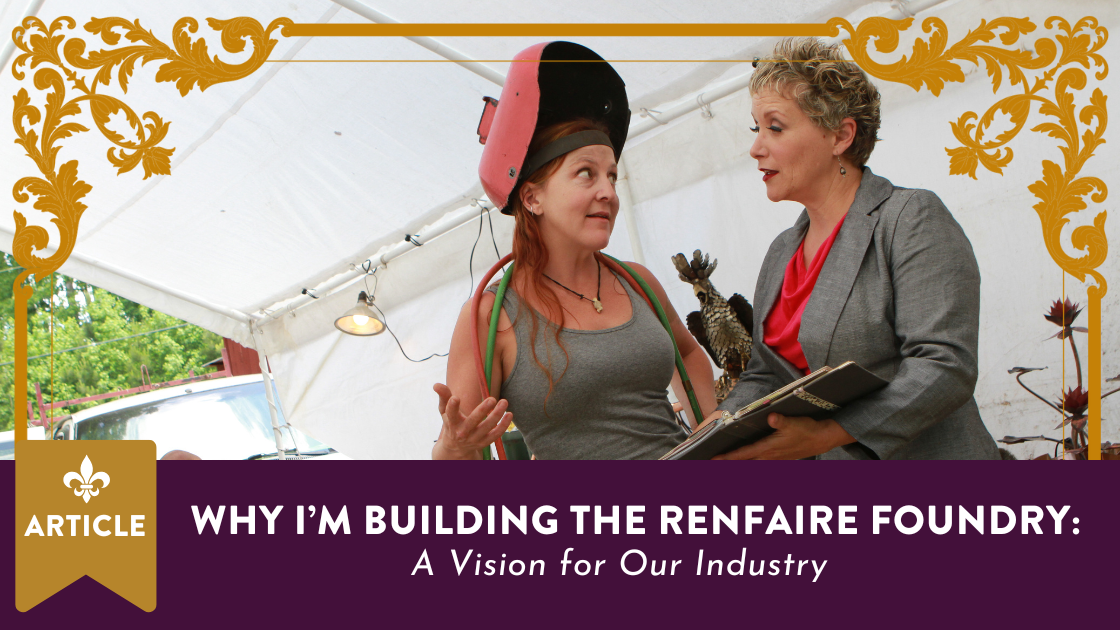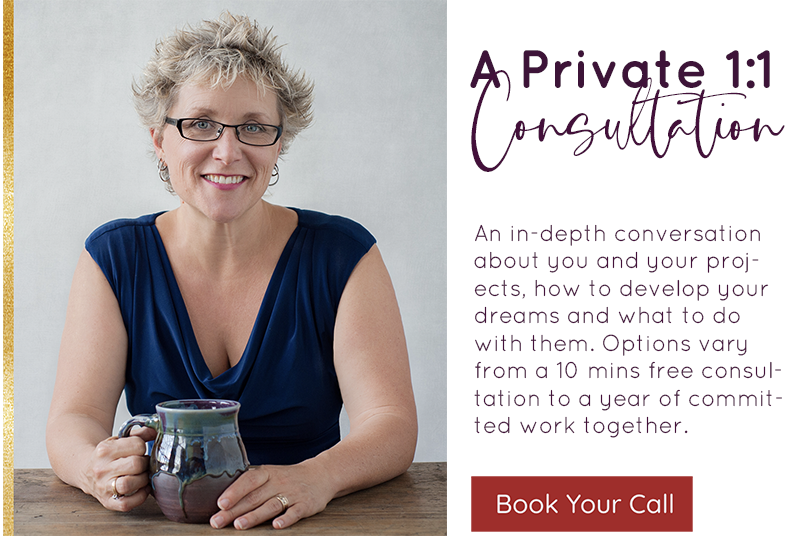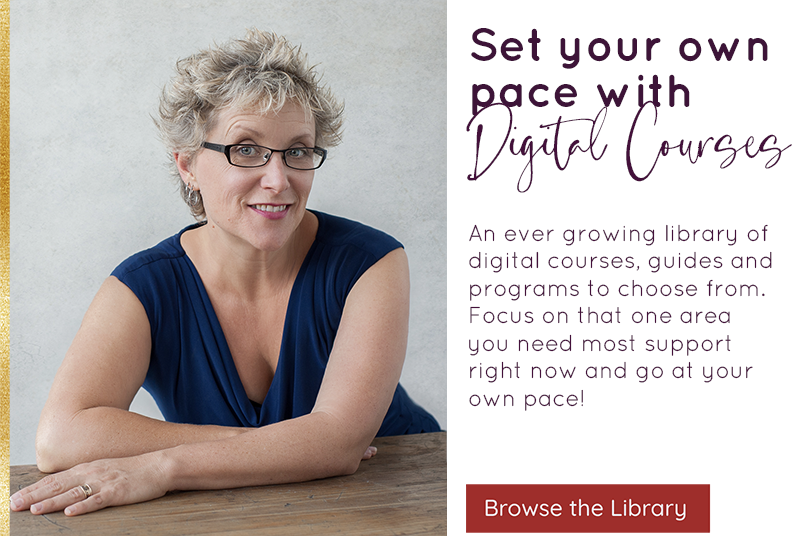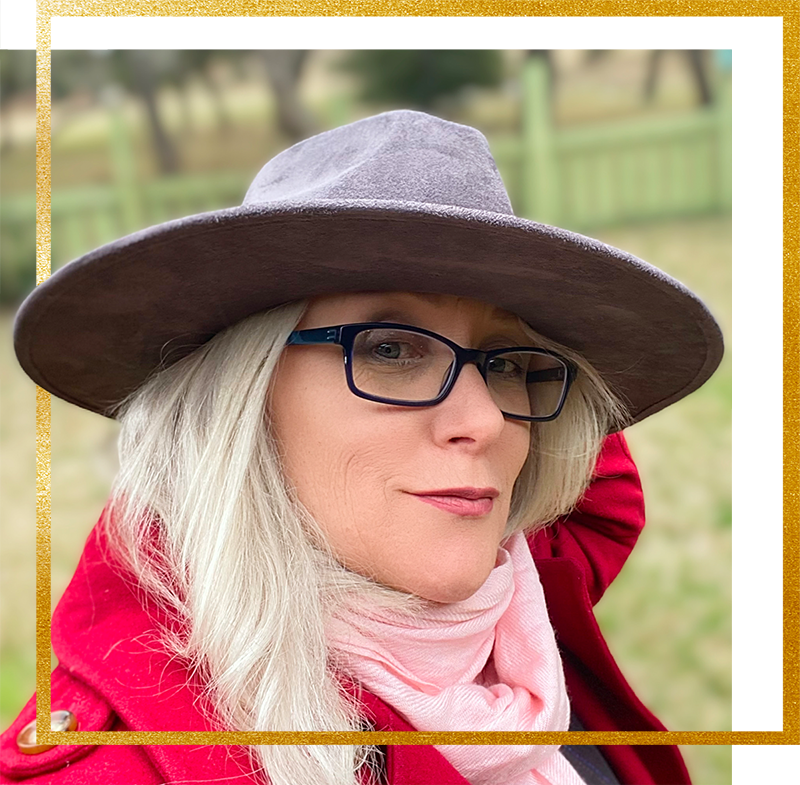George Coulam created and owned the largest Renaissance Festival in the US. The very show where I own and manage 9 restaurants —-“King George” to those of us who sold at, or worked for the Texas Renaissance Festival … he died on May 21st, 2025.
George Coulam was a lot of things. He was a genius with whom conversations could be challenging as the parties involved sought to find a common level for communication.
He was difficult, a narcissist, and the grandfather of an entire industry.
Phyllis Patterson invented Renaissance festivals, but George Coulam—with his idolization of Walt Disney—saw the potential of a Permanent Park Renaissance Festival industry.
An artist himself… he first tried to build a permanent economic community for artists in his home state of Utah. When that failed, he tried again in Minnesota, not far from the Twin Cities. The Minnesota Renaissance Festival is considered the first permanent park Renfaire, and his partners and employees there went on to launch some of the most successful and well-respected Renaissance parks in the country.
But George wasn’t one for sharing the reins.
Tired of having to reach consensus to move forward with plans, he took his buyout from the Minnesota Renaissance Festival and moved to Texas. In Texas, he had no partners, and started buying land; patterning himself after Walt Disney’s actions in Florida.
He bought land. He made a town. He became mayor, and he kept buying land to create the largest Renfaire in the western hemisphere.
The park started small and grew as audience numbers increased. His vision for the parking lot involved planting trees so that every car had shade in the Texas heat.
And to manifest his ideas, he relied on one part inspiration, one part manipulation, and a whole lot of pageantry.
He created ridiculous contests in order to motivate crew towards his visions; whether it was a “Root Picking Contest” rewarding the biggest pile of roots dug, or the best costume worn during that process as they cleared land for more parking; or his “Building Design Competitions” that would gift beautiful buildings to artists within his festival by having the prize for the contest winner be his payment of the building expenses. All of it served his vision for the beauty and guest experience within the park.
He was not always kind while manipulating the pieces on his chessboard, but he was kind to me. I had no illusions about the fact my fortunes might change. Narcissists are funny that way.
Like many, I was mainly invisible to George for quite a while. My nicknames evolved as my roles changed. Gendered at first… I was Philly‘s wife. He had known my husband Phil for over 35 years when I entered the sphere of TRF. Phil had worked for George as his lead carpenter for three years at the early development of the festival. (We’re pretty sure it was years 6 to 9.)
Eventually, as I found my own footing, I became The Baker; then The Cookie Lady.
George had always called booth #8 the bakery and just as he had done for its owners Sarge and Anna 17 years prior – when their family decided it was time to sell The Queen’s Pantry, he told them who to sell it to.
I developed that booth into a true bakery and George’s sweet tooth made him a regular visitor. When his strategies for brain health led him to a low sugar and low grain diet, he had me design grain-free and low-sugar cookies he could keep in his freezer. At that point, I became The Cookie Lady. Throughout all of these nicknames, I’d be called Connie, Bonnie, Lonnie—but mostly Cookie Lady.
I cruised along in that role for maybe a decade, until a conversation about show layout changed everything.
One day on site, I lectured the current Vendor Coordinator on Pinball Theory.
Pinball Theory is a metaphorical way of analyzing placement of structures within a park to ensure smooth and efficient movement of guests through the space. It’s a tool used to manipulate the guest to go where you want—and really easy to screw up if you don’t understand it.
Apparently, that vendor coordinator went directly to George and asked why he had not been taught Pinball Theory, or perhaps asked if the concept was BS … because George was at my bakery within the hour.
George showed up with his General Manager. He looked me in the eye and said “Pinball. Where did you get that?” Having some childhood experience with narcissists, I asked back “Did you explain it to Phil 40 years ago and I gathered it from there?”
George said “No it’s not mine. You think a minute and figure out where you first used it and where it came from.” At this point, George turned back towards his GM and while poking him in the chest with his finger said “It’s the perfect explanation of what happens out there and your vendor coordinator needs to understand it as do you.” (poke poke) Then George turned back to me and said “Where did it come from?” I answered “I made it up when we were laying out the Georgia Renaissance Festival site for Jack Sias. I needed a way to explain what we were working to accomplish there when we made changes.” George said “It’s really smart. Talk to us about the elements other than bumpers and targets.” So we talked about flippers and crowd movement and a few of the other elements of this theory that I had fleshed out decades before. When George had heard enough, he asked for a couple of desserts and left with the General Manager.
That moment was the shift. I have no idea if the nicknames he used for me in the office changed at that point; but the conversations between George and myself had transformed into explorations of what the future looked like for my businesses, for TRF, and for the industry as a whole.
From that day on, the conversations changed. I became a person he talked to, not just about desserts or cookies—but about creativity, impact, and vision.
I’ve used the term narcissist, but as George’s identity was wrapped up in the Texas Renaissance Festival, actions taken for the betterment of the festival itself were accepted as appeasement or even as tribute. My fascination with -well perhaps even obsession with- the festival industry as a whole made it easy to stay in good graces … because I too wanted whatever was best for the show.
Food became another battleground for innovation and experimentation.
George had a decades-long project of improving the food program to the level where it rivaled entertainment for prominence on exit surveys. Every two or three years all the food vendors got research assignments. Sometimes this meant attending trade shows or developing signature beverages. Sometimes it meant essays written on whatever subject, or developing menu items that would garner press for the season. One year it was garnishes and how many of our food items could include them, deftly leaning into our current Instagram-ready era.
He was famous for not explaining exactly what he wanted. He gave a general direction and intentions, then stood in judgment as the cats he was herding made their own best guesses about what he meant. He saw creative people as smart people (I’m convinced this is at the heart of his choice to surround himself with artists), and had a hard time accepting that someone could be smart and not be creative. These assignments from The King could improve or harm our standing with him depending on the creativity of our responses.
Sometimes George’s assignments weren’t formal at all—just a passing comment that planted a seed.
Often George came to me with extra assignments. Like “Would the Basilica serve better as a tea room?” The answer was no, so the show went forward with an expensive roof project that allowed it to become more useful as a wedding venue. But a tea room could work if it was closer to my bakery, the Queen’s Pantry. He had planted a seed about creating a special experience for guests that leveraged the brand I had built with my bakery.
George didn’t just encourage me to think outside the box. He said “what fucking box?”
More than once he said to me “The how comes later!”
He’d ask “What is your vision for 20 years from now? … the future of the architecture and offerings of the park if the hows and the money was not part of your job?”
That tea room did happen, though not at the Basilica.
A longtime friend and artist owned a 14-foot wide jewelry shop next to my bakery. We shared a wall and she was forced to deal with the sounds of bakers at 5 AM on festival days. I had asked her for first denial when she retired and wanted to sell out. Fourteen feet is not enough space for a tea room and kitchen, but I was encouraged to imagine. I created a new piece of festival real estate by perching the tea room on a deck 16 feet in the air above the Queen’s Pantry park guests. The list of problems solved with that outside-the-box answer to the tearoom question is extensive, but that info is found in this YouTube video.
I was by no means George Coulam’s right hand … he didn’t allow many people that close, but he asked my opinion on a variety of subjects related to future visioning of the park. He encouraged my commitment to the industry as a whole, but I’m fairly certain he only wanted to see how these meetings and consultations I had elsewhere came back home with me to help improve his festival.
The opportunities created by George Coulam affected the lives of thousands, whether at a festival he opened, or within the industry he birthed. I for one am grateful for his vision.
I enjoy a life beyond anything I imagined for myself, and all of that is owed to the existence of this industry and the opportunity to keep showing up with ideas and a willingness to work. This industry rewards creativity and the ability to deliver within a timeframe (no screw guns or ladders out once the festival is open to guests). No concern is given to pedigree or college degrees … just how well you understand the mission and how you act upon this shared stage.
Thank you George. You will be missed.
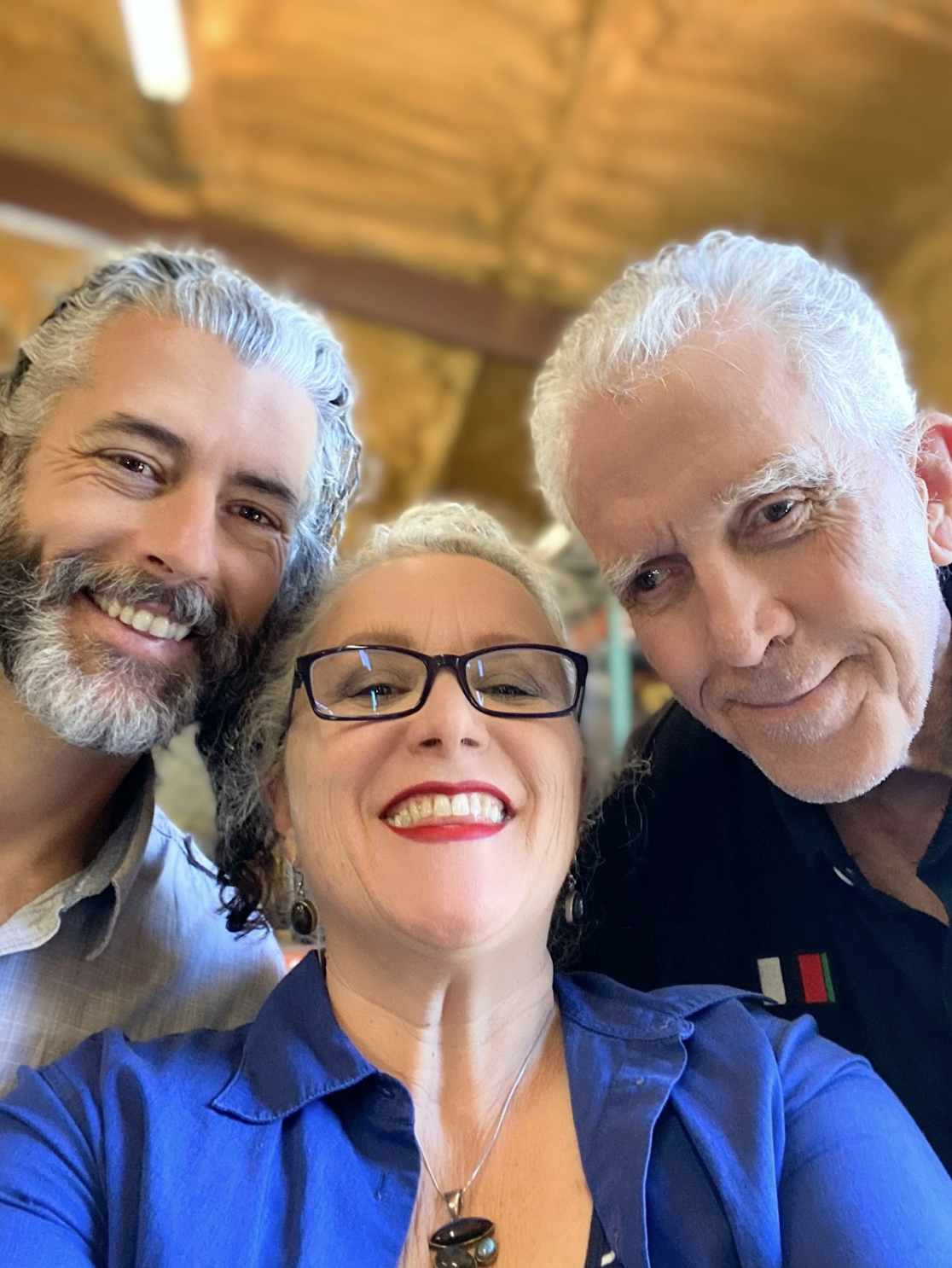
Rhonni, standing between Louie Migliaccio, and George Coulam during a springtime tour of the Stargate Art Studios.


